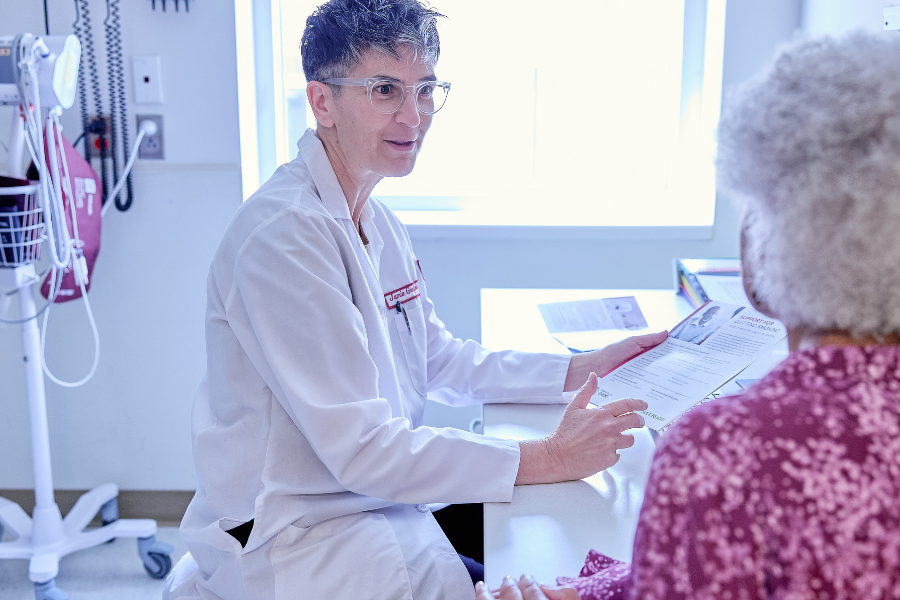When 72-year-old Philadelphia resident Kenneth Nocho became short-of-breath by climbing 13 steps in his home, he knew he had a problem.
"I sat on the bed to catch my breath then walked six steps to the bathroom and was out-of-breath again," said Nocho. "That's when I knew it was time to get help."
Nocho immediately had a friend drive him to see his family physician, Delana Wardlaw, MD, of Temple Physicians Inc., who quickly sent him to Temple University Hospital (TUH). A CT scan in the Emergency Department revealed that Nocho had a large blood clot in his lungs and that his right ventricle had suddenly become weak and enlarged. The diagnosis: a pulmonary embolism.
"Pulmonary embolism is a very deadly condition caused by a sudden blockage of a lung artery by a blood clot. This causes more than 100,000 deaths each year in United States," said Riyaz Bashir, MD, Associate Professor of Medicine and Director of Vascular and Endovascular Medicine at TUH. "Patients often suffer a sudden shortness of breath and many die before medical treatment can be administered."
Dr. Bashir determined that Nocho was a perfect candidate for a new treatment being offered at Temple called EKOS-enhanced thrombolysis. Temple is the only hospital in the region currently offering advanced medical, catheter-based, and surgical therapies for acute and chronic blood clots in the lung.
During the procedure, doctors use the EKOS EndoWave Infusion Catheter System® to thread a new type of catheter directly into the clot and deliver clot-busting medication over a period of hours, while an ultrasound core in the catheter simultaneously delivers high frequency, low-power ultrasound waves to the clot to hasten its breakup.
"The biggest advantage of this procedure is that we can use less than one-fourth of the usual dose of the clot-busting agent," said Dr. Bashir. "This substantially reduces the risk of an associated bleeding complication."
According to Paul Forfia, MD, Medical Director of the Pulmonary Hypertension, Right Heart Failure and Pulmonary Thromboendarterectomy Program at TUH, Dr. Bashir's expertise and use of the EKOS system fits perfectly into Temple's state-of-the-art portfolio of treatments for disorders related to blood clots in the lung.
"Our vision is to make TUH the premier center on the East Coast for the treatment of acute and chronic pulmonary embolism," said Dr. Forfia. "We are well on our way."
Kenneth Nocho doesn't need any convincing.
"I think it's a wonderful procedure," said Nocho, who was up and walking without oxygen the day after surgery. "What Temple did was really remarkable. It's been a month and I'm doing fine at home."
According to T. Sloane Guy, MD, Associate Professor of Surgery and Chief of Cardiothoracic Surgery at Temple, the use of EKOS-enhanced thrombolysis is an enhancement to Temple's comprehensive pulmonary embolism program that includes medical management and complex surgical and endovascular interventions.
"We are the only hospital in the area with all of the specialists and unique equipment to perform this procedure," said Dr. Guy. "It's part of Temple's overall commitment to quality of care."

